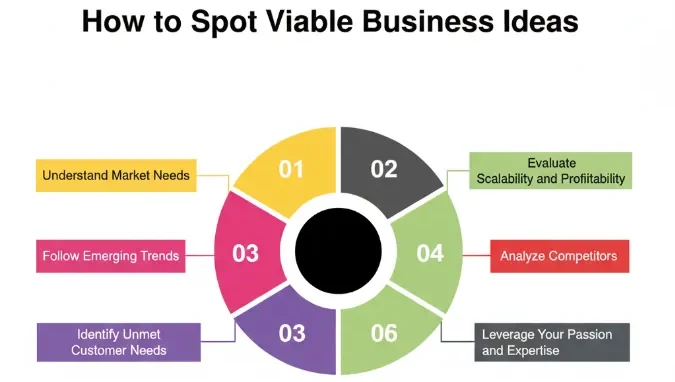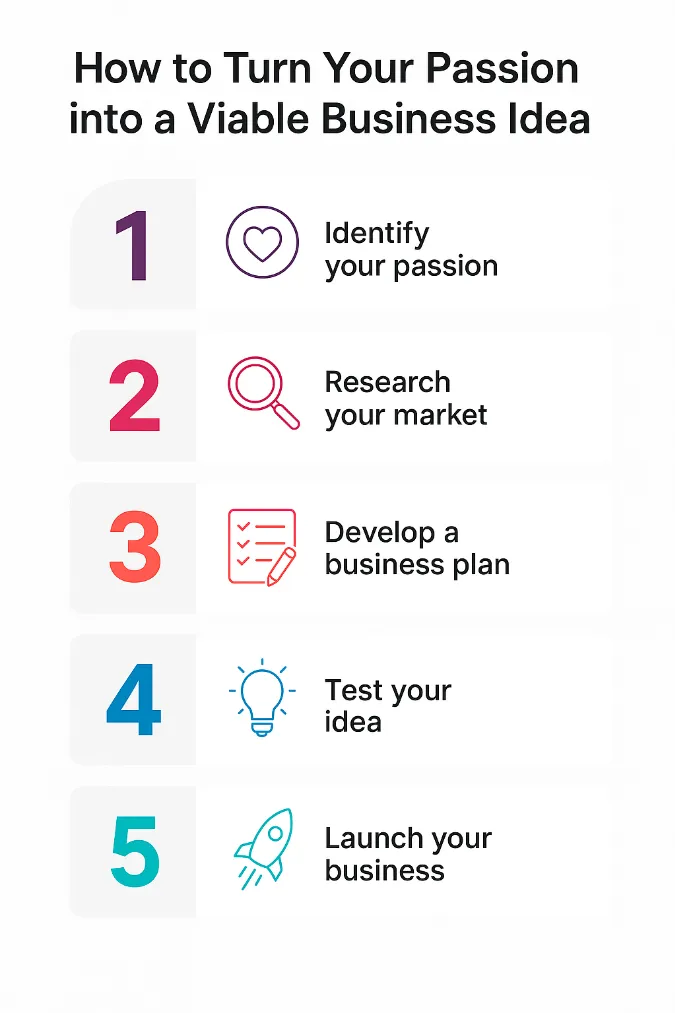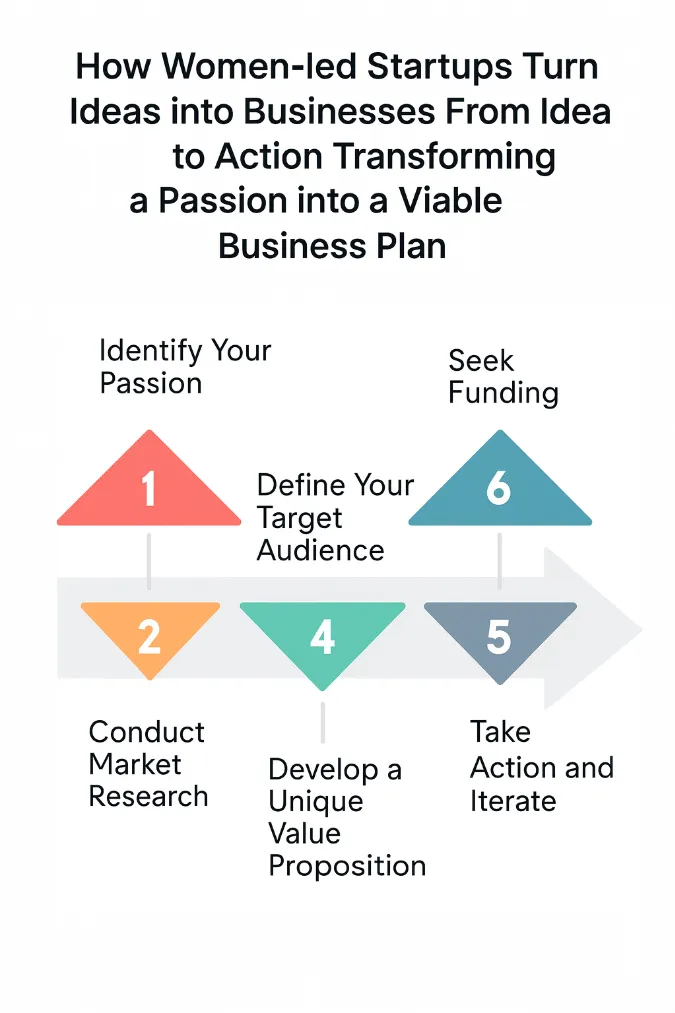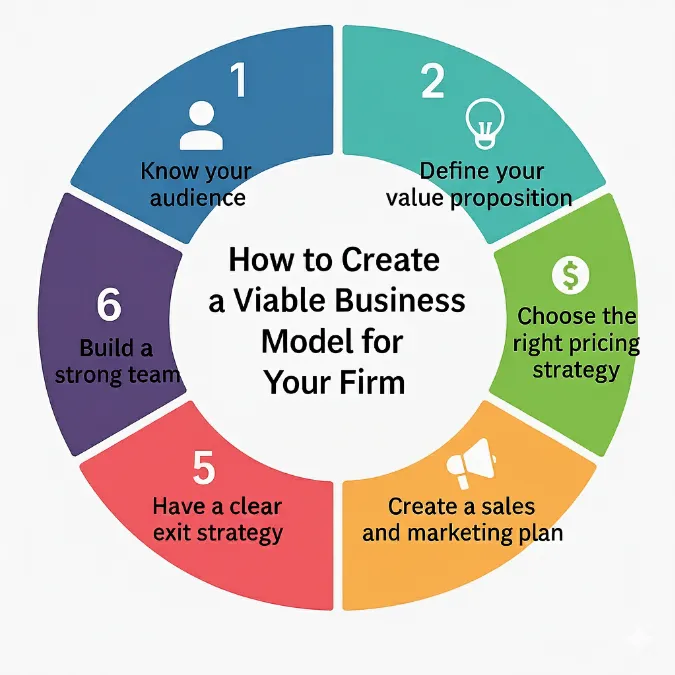Finding Your Golden Idea: A Guide to Building a Profitable Business

Starting a business is exciting. You have a dream.
You want to be your own boss. But did you know that many startups fail within the first few years?
It’s often not because of a lack of effort. It’s because they chose the wrong idea.
They built a solution that nobody needed. They invested time, money, and energy into an idea that wasn’t profitable.
But what if you could change that? What if you could learn to spot a good idea from a bad one?
This blog is for you. Whether you’re a student with big dreams or a beginner eager to start, we’ll walk you through a step-by-step process.
By the end, you’ll know exactly how to find a profitable business idea. You’ll learn to think like a successful entrepreneur.

🚀 Turn your ideas into reality—start your journey in Business Development today!
Table of Contents
Toggle1. What Makes an Idea Profitable?
A profitable business idea is more than just a cool concept. It’s an idea that solves a problem for a group of people. It’s an idea that people are willing to pay for.
The best ideas have four key elements:
Demand: People actually need what you are offering.
Scalability: The business can grow and reach more customers.
Uniqueness: Your product or service stands out from the rest.
Execution: You can turn the idea into a real business.
Think of it this way. An idea to sell fancy, custom-made pencils might sound fun.
But is there a big demand? Probably not. Is it scalable? Maybe, but the profit margins are small.
This could be an unprofitable idea.
Now, think about an idea to create an affordable, subscription-based app for students to manage their study notes.
Many students struggle with this. There is a clear demand. It’s scalable.
You can sell it to thousands of students without much extra effort. This is a profitable idea.
2. Start with Your Passion and Skills
You’ll be working on this business for years. So, it’s vital to love what you do. Your passion fuels you during tough times. Your skills give you an advantage.
Start by asking yourself:
What am I good at?
What topics do I read about for fun?
What problems do my friends ask me to help with?
Let’s say you are a commerce student. You are great with numbers.
You understand balance sheets. You could start a small bookkeeping service for local businesses.
Many small shops can’t afford a full-time accountant. They struggle with their finances.
Your skills align perfectly with a market need. You solve their problem, and you get paid. This is a powerful starting point.
3. Solve a Real Problem
The most successful businesses don’t sell products. They solve problems. They find a pain point in people’s lives and offer a solution.
Look around you. What are the daily struggles people face?
Is it hard to find a good plumber on short notice?
Do people in your area want healthy food but have no time to cook?
Are local businesses struggling to get more customers online?
Think about companies like Swiggy and Zomato.
Before them, ordering food was a hassle. You had to call different restaurants.
You didn’t know the full menu. Delivery could be slow. Swiggy and Zomato solved this problem.
They made food delivery easy and fast. They built a massive business just by solving a common problem.

4. Conduct Market Research
You have an idea. Now, you must check if it’s a good one. You need to do some research. You don’t need to spend thousands of rupees. You can do this easily and for free.
Here are some simple methods:
Surveys: Create a short survey using Google Forms. Share it with your friends and on social media. Ask if they would use your product or service.
Social Media Polls: Use Instagram Stories or Facebook polls. Ask quick questions to your followers.
Competitor Analysis: Who else is doing something similar? What are they doing well? What are they missing? This helps you find a gap in the market.
Online tools can help you even more.
Google Trends: See if interest in your topic is growing or shrinking. For example, search for “eco-friendly packaging” and see its trend over the last few years. If the graph is going up, it’s a good sign.
Quora and Reddit: These are goldmines. People post their problems and questions here every day. Search for your niche. Read the discussions. You will find out what people are struggling with.
🌟 Learn. Build. Grow. Your career in business starts here!
5. Analyze the Target Audience
You can’t sell to everyone. You need to know exactly who your customer is. Is it a student? A working professional? A busy mother? A small business owner?
Create a simple customer persona. Give your ideal customer a name. Think about their age, job, and daily challenges.
Example:
Name: Anjali
Age: 21
Profession: College Student
Problem: She finds it hard to eat healthy food on a budget. She has to cook every day or eat unhealthy junk food.
Your Solution: You could start a service that delivers affordable, healthy meal plans for college students. You are not just selling food. You are selling a solution to Anjali’s problem.
6. Evaluate the Competition
Don’t be afraid of competition. It’s a good thing! It proves that people want what you are offering. It shows there is a market.
The key is to stand out. How will you be different?
Is your product higher quality?
Is your service faster?
Is your pricing more affordable?
Do you offer a better customer experience?
Think about Ola and Uber in India. They both provide cab services.
But they compete on different fronts. One might have better pricing, while the other might focus on driver quality.
Your job is to find your unique selling point (USP).

7. Check Profit Margins and Costs
A business is only profitable if it makes more money than it spends. This is a simple but critical point.
You need to understand two things:
Revenue: The total money you bring in.
Costs: The money you spend to run the business.
Profit = Revenue – Costs
Before you launch, do a simple cost analysis.
How much will your raw materials cost?
What about marketing?
Will you need to hire people?
What are the overheads (rent, electricity)?
Consider the profit margins. A digital product like an online course has very high margins. You create it once, but you can sell it to thousands of people. A physical store, like a clothing boutique, has lower margins because of rent, inventory, and other costs.
8. Test the Idea with a Minimum Viable Product (MVP)
Don’t build a full-fledged business on day one. Start small. The goal is to test your idea with the least amount of time and money. This is called a Minimum Viable Product (MVP).
An MVP is a basic version of your product or service. It has just enough features to be usable. You can show it to people and get their feedback.
Low-cost ways to test your idea:
Prototypes: If it’s a physical product, make a simple prototype.
Pilot Batches: If you’re selling food, make a small batch and sell it to a few friends first.
Online Pre-orders: Create a simple landing page. Explain your product. Ask people to sign up for a waiting list or even pre-order. This shows you if people are truly interested.
An easy example: You want to sell handmade crafts. Instead of launching a full website, start an Instagram page.
Post your products. Ask people to DM you to order. This is your MVP.
It proves demand before you invest in a website or inventory.
💡 Unlock your potential—master the skills to build and grow a successful business!
9. Seek Feedback Early
Your friends and family will always say your idea is great. But you need honest, unbiased feedback.
Talk to Potential Customers: Show them your MVP. Ask them if they would use it and why.
Find a Mentor: A mentor who has experience in your field can give you a reality check.
Join a Community: Look for online forums or local business groups. Share your idea and get constructive criticism.
College competitions are great for this. You pitch your idea to a panel of judges. They ask tough questions.
This process forces you to think about every aspect of your business. It’s a great way to get valuable feedback.
10. Consider Future Trends and Sustainability
The world is changing fast. Your business idea should be relevant for the future.
Think about emerging trends:
AI and Automation: How can you use AI to make your service better or more efficient?
Renewable Energy: Is there a way to build a business around clean energy?
Digital Education: Online learning is here to stay. Can you create a course or a learning platform?
Wellness and Mental Health: People are more aware of their well-being. Can you offer a service that helps them?
The COVID-19 pandemic showed us this. Many traditional businesses struggled. But digital learning platforms, online fitness classes, and home delivery services boomed. They were ready for the future.
11. Validate Financial Viability
You must understand your break-even point. This is the point where your revenue equals your costs. After this, you start making a profit.
Long-term vs. Short-term Profitability: Some businesses make a profit quickly. Others, like a technology startup, might take years to become profitable. You must be patient.
Think about the difference between a cloud kitchen and a full-scale restaurant. A cloud kitchen has low costs. It can become profitable faster. A full-scale restaurant has high costs (rent, staff, décor). It takes longer to reach the break-even point. Choose a model that fits your goals and budget.
12. Legal and Practical Considerations
Don’t ignore the legal stuff. It can save you from big problems later. You don’t need to be a lawyer, but you should know the basics.
Licenses and Permits: What licenses do you need? For a food business in India, you need an FSSAI license.
Business Registration: Should you register your business as a proprietorship or a partnership?
Taxes: How will you handle taxes?
Spending a little time on legal clarity now can prevent massive fines and headaches later. This is an important step to ensure your business is on a solid foundation.

13. Learn from Successful Business Stories
Read about people who started small and made it big. Their stories are not just inspiring. They are full of lessons.
Paytm: Before Paytm, paying bills and recharging phones was a pain. You had to stand in long queues. Paytm saw this problem. They created a simple app to solve it. Today, it’s a giant in digital payments.
Mamaearth: They started with a single problem: finding toxin-free baby products in India. They found a gap in the market. They used their understanding of the target audience (new parents) and built a brand that focuses on clean, safe products. They are now a huge D2C (Direct-to-Consumer) brand.
Conclusion
Finding a profitable business idea is not magic. It’s a process.
It starts with you. It starts with your passion and skills. Then, you look for a real problem.
You research, you test, and you listen to feedback.
So, what are you waiting for? Don’t wait for the perfect idea.
The perfect idea doesn’t exist. Start with a small idea. Test it. See what works. Then, grow.
The world is full of problems waiting to be solved.
And you have the power to solve them. Start observing.
Look for those small struggles in your daily life. The next big business idea might be right there, waiting for you to find it.
Now, go out and start your journey!




